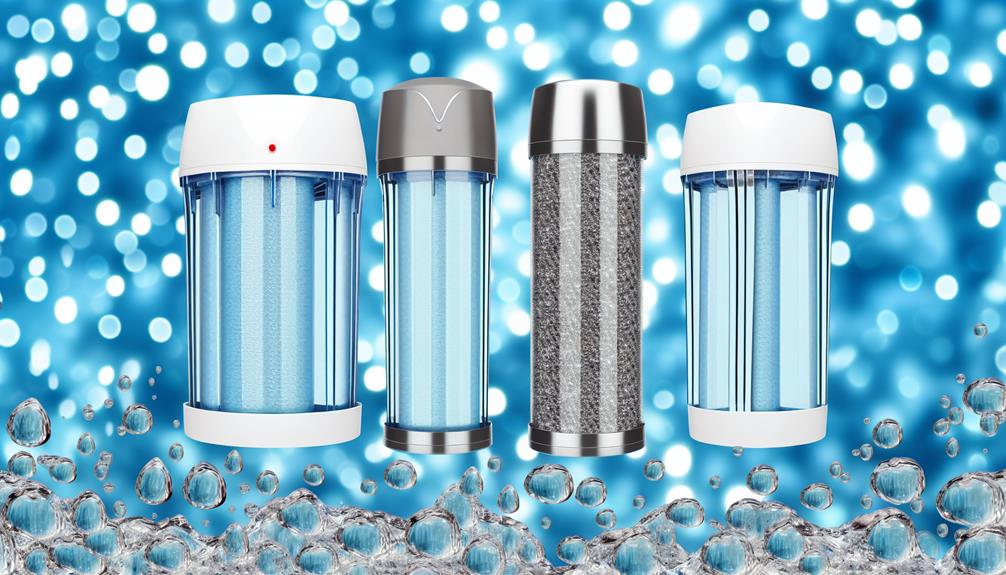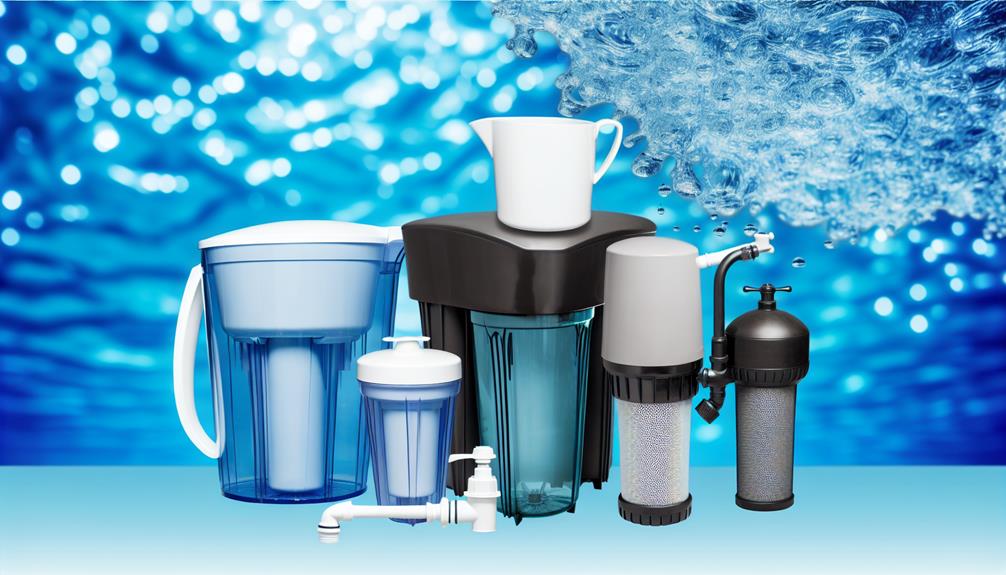Is it truly beneficial to rely on nature's own methods for purifying your water?
You've likely heard about the myriad of contaminants that threaten the safety of our drinking water, and you may be considering natural purification techniques as a solution. These methods, which mimic the cleansing processes found in the environment, promise a sustainable and cost-effective way to ensure the water you consume is free from harmful substances.
By choosing to harness the power of natural filtration, precipitation, and sedimentation, you're not just making a choice for your health; you're also making a commitment to the planet's well-being.
Yet, as you weigh the pros and cons, you might wonder if these techniques can truly stand up to the modern pollutants that plague our water systems. Let's explore the potential that lies in natural water purification, and discover whether it can address the complexities of today's environmental challenges.
Understanding Contaminants in Water
To safeguard public health, it's essential to recognize the diverse contaminants in water, ranging from microbial pathogens to chemical pollutants, that can compromise its safety and quality. Water purification methods are crucial in mitigating the risks posed by these contaminants. Physical, chemical, and biological agents must be analyzed meticulously to ensure that water meets stringent safety standards.
Groundwater, often deemed a safer alternative to surface water, isn't immune to pollutants. Over-exploitation and contamination can lead to scarcity and quality degradation. Contaminants are removed through natural subsurface processes, including filtration, which captures suspended solids, and sedimentation, that allows heavier particles to settle. Precipitation reactions can reduce concentrations of heavy metals, while organic compounds are often tackled through oxidation-reduction processes that chemically transform contaminants. Sorption-desorption and ion exchange are also vital in eliminating organic matter and inorganics from water.
However, these natural processes alone can't always cope with high contamination levels. Groundwater recharge techniques enhance the natural purification capacity, where pre-treatment and bank filtration can further reduce contaminant load before water re-enters aquifers, improving both quality and availability.
Understanding these contaminants and their removal processes is fundamental to securing safe drinking water for billions worldwide.
Benefits of Natural Filtration
Harnessing the Earth's subsurface as a natural filter offers a sustainable approach to water purification that is both cost-effective and environmentally friendly. Groundwater recharge processes contribute to the natural cleansing of surface water, improving water quality and ecological balance. These methods support the availability of clean water for consumption and use, ensuring that natural spring water maintains its purity.
Diving deeper into the technical aspects, natural filtration takes advantage of the absorptive and filtering properties of geological formations within the subsurface, such as sand and soil. Sand filtration, for instance, effectively removes contaminants due to its fine granular texture. This process is similar to engineered water purification methods but does not require external energy inputs, resulting in lower operational costs and energy consumption.
Additionally, the role of indigenous microorganisms in these settings is crucial. These microorganisms have natural biodegradation capabilities that help break down organic pollutants, further enhancing the filtration process. By utilizing these biological agents, a complex and synergistic system is created, ensuring the long-term integrity and sustainability of water resources.
To guarantee continued water quality and availability, groundwater protection zones are essential. These zones safeguard the natural filtration areas, preserving the effectiveness of the filtration process.
Common Natural Purification Techniques
Understanding the Earth's natural purification systems, you'll find that techniques like infiltration and artificial groundwater recharge play critical roles in enhancing water quality through natural processes. Unlike carbon filters and reverse osmosis filters, which are common engineered water filters, these natural water purification methods harness environmental processes to provide safe drinking water.
Here's a concise look at some of the most prevalent natural water purification techniques:
- Infiltration: This process involves the percolation of surface water into shallow aquifers, which can naturally remove contaminants through various mechanisms such as filtration, sedimentation, and biological degradation.
- Artificial Groundwater Recharge: By directing water through basins, pipes, ditches, or wells for infiltration, this technique supplements the natural recharge of aquifers. It's controlled to align with periods of average water availability, ensuring optimal purification and water storage.
- Protection of Recharge Areas: To maintain the integrity and effectiveness of these natural systems, it's crucial to establish groundwater protection zones. These areas safeguard the subsurface environment, ensuring that the water purification methods remain sustainable and effective over time.
These natural processes complement traditional water purification methods, offering a robust approach to managing and ensuring the availability of safe drinking water.
Comparing Natural and Artificial Methods
When comparing natural and artificial water purification methods, it's evident that each employs distinct mechanisms and technologies to achieve water cleanliness and safety.
Natural water purification techniques leverage the environment's inherent capabilities such as subsurface filtration, sedimentation, and the action of naturally occurring microorganisms. These processes are energy-efficient and lower in environmental impact, but they might struggle to contend with certain pollutants.
On the flip side, artificial methods entail engineered solutions like pre-treatment and advanced filters, including reverse osmosis filters capable of excising even dissolved salts from water. These systems often deliver a higher efficacy in removing specific contaminants. The artificial approach, however, typically demands more energy and can involve the use of chemicals, which may raise concerns regarding infrastructure costs and ecological footprint.
The decision between natural and artificial water purification hinges on several factors. You need to consider the initial quality of the water, what resources are accessible, the associated costs, and the level of purity required.
While natural methods are generally more sustainable, artificial methods provide a level of control and reliability that's sometimes necessary, especially where water sources are heavily contaminated.
Maintaining Healthy Ecosystems With Natural Purification
Mother Nature's own water purification systems not only enhance water quality through subsurface processes but also play a crucial role in sustaining the health of ecosystems. By incorporating natural water purification techniques, you're not just cleaning raw water, you're maintaining the delicate balance required for flora and fauna to thrive. These methods effectively manage dissolved salts and other contaminants without disrupting the existing environment.
Here's how natural purification contributes to healthy ecosystems:
- Subsurface Contaminant Removal: The earth acts as a natural filter, with soil and rock layers removing pollutants from water as it percolates, preserving the integrity of underground water sources.
- Artificial Groundwater Recharge: Techniques like pre-treatment and bank filtration mimic natural systems to recharge aquifers, increasing water availability while stabilizing local ecosystems.
- Protection of Recharge Areas: By establishing groundwater protection zones, you ensure that the areas contributing to groundwater recharge are safeguarded, which is vital for the overall health of the ecosystem.

